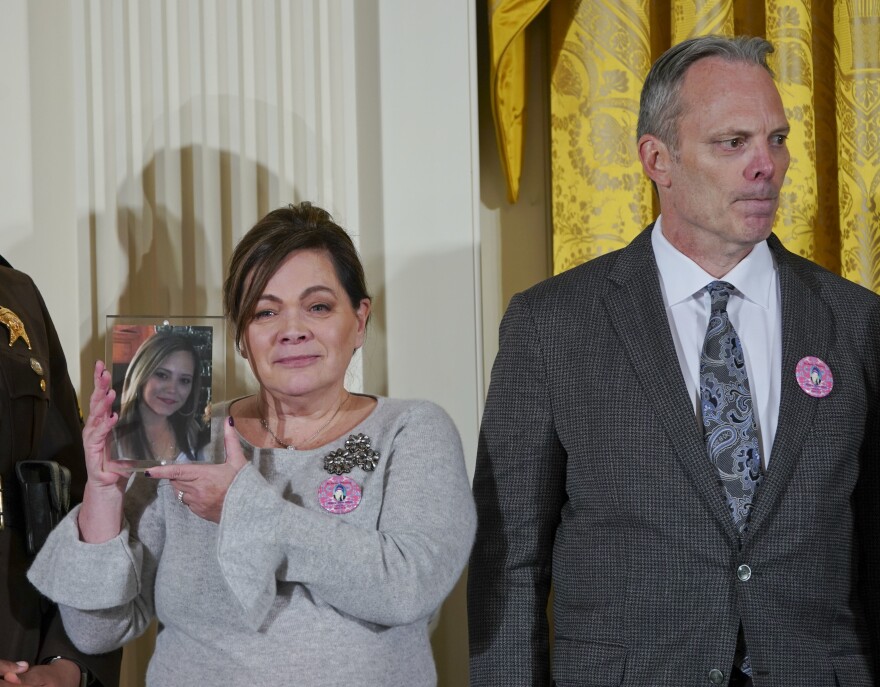Every day, an estimated 140 people die of opioid overdoses in the U.S., according to health officials. President Donald Trump recently declared opioid addiction a public health emergency.
In McLean County, the number of overdose deaths nearly doubled in the past year to 23. The number of people still addicted remains elusive. However, local officials are trying to determine the scope of the problem: how to treat it and prevent it.
On Nov. 14, law enforcement officials will join doctors, pharmacists, attorneys and treatment specialists for the county’s first-ever summit on opioid addiction. (A separate conference on the statewide opioid crisis is planned for Wednesday, hosted by the Illinois Criminal Justice Information Authority.)
Among the local summit's organizers are former McLean County Sheriff Mike Emery, now law enforcement coordinator with the U.S. Attorney's office for Central Illinois; Nathan Hinch of the McLean County Bar Association; and Adam Ghrist, first assistant state's attorney.
Ghrist said the spike in overdose deaths is partly the result of drugs being mixed to form a lethal combination.
"You have drugs like fentanyl being mixed with heroin. What that does is prevent overdose reversals from being successful, and therefore you have more deaths,” Ghrist said on GLT’s Sound Ideas.
Emery said people who aren’t addicted initially to heroin will often seek out heroin when they can no longer obtain prescription pain medication.
“What we’re seeing is the prescription opioids are being stopped, and people are turning to heroin. And if you mix that with fentanyl, that can tranquilize a horse. And we are also seeing carfentanil (a more potent form of the drug) which is powerful enough to tranquilize an elephant,” Emery said. “And when you mix those elements together, there is going to be a devastating effect on the individual.”
Hinch said many opioid addictions begin with legitimate medical treatment.
“It starts as innocently as an injury or a surgery just receiving pain medication, but people don’t realize how addictive it can be. Then you can get into excessive prescriptions or prescription medication abuse,” Hinch said.
“When that channel is shut off, the addiction is already so entrenched, the person who might not otherwise be drawn at all to illegal drugs might turn to drugs like heroin or fentanyl,” he added.

Ghrist said the over-prescribing of opioids helped spark the epidemic. The summit’s organizers have reached out to doctors and pharmacists to attend and say better documentation is necessary to determine who is prescribing opioids and where.
“Until we are able to identify who the abusers are and who are (over-prescribing), we can’t do anything on the enforcement end,” Ghrist said.
Ghrist said the 23 people who died of overdoses in the county represent a cross-section of the community.
Among the 23 county residents who overdosed this year, eight had some college education, eight had graduated high school, three didn’t complete high school, one didn’t finish elementary school and three had bachelor’s degrees, Ghrist said.
Two had served in the military, five were married, three divorced, 14 had never been married, and there was one widow.
“It is an indiscriminate problem that goes across every boundary of our community and society," Ghrist said.
Emery said men are far more likely to die of opioid overdoses than women. Most of those who died were white males between the ages of 18 and 64.
“It is very easy to think this is someone else’s problem, for those of us who consider ourselves healthy. It’s not just somebody else. It’s potentially me, it’s perhaps my colleagues in the bar association,” Hinch said.
All three said local officials have not yet been able to determine how many people in the county are still living with an opioid addiction.
Hinch said the role of pharmaceutical companies is also coming under greater scrutiny for potential civil liabilities.
“What did they know or what didn’t they know in terms of how addictive prescription opioids are? And should there be any civil liability not necessarily separate from the criminal?” Hinch said.
“We are starting to see some of those (civil) lawsuits popping up across the country,” Hinch added.
The epidemic has been building for years. Why, then, has it taken the county so long to address it with this kind of summit?
“The problem has been anecdotally building. It’s at a threshold, I would say,” Hinch said.
“It’s coming to light now because we’re starting to see where the prescription opioids are being reduced, but those that now have the opioid addiction have no avenue, no pain management treatment or treatment facility for them to go to, so they turn to heroin,” Emery said.
He said nine million opioids were prescribed in one year in one town of 5,000 in Virginia.
“So you see where the opioids have built up, and then they are being reduced, and people are turning to heroin and overdosing,” Emery said.
Ghrist said the strategy previously has been to address the problem “in reverse” through law enforcement. What’s necessary now, he said, is additional treatment options and strategies for prevention.
Local law enforcement, for example, is looking into bringing people arrested for heroin use directly to a treatment facility rather than to the county jail, Ghrist said.
Noting how public and private organizations have tried to come together to solve the mental health crisis in the county, Emery said it will take a similar communitywide effort to address the opioid crisis.
WGLT depends on financial support from users to bring you stories and interviews like this one. As someone who values experienced, knowledgeable, and award-winning journalists covering meaningful stories in central Illinois, please consider making a contribution.


